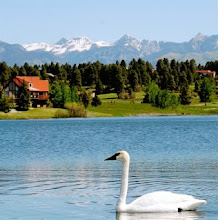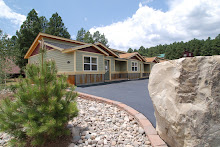Jack Wilshire has been living on Lewis Street since 1980. He originally moved here in 1977 before the “old” City Market came to town. Jack works at the local hardware store and he also works at the local sandwich shop. He is 40-something years old.
Jack works 40 hours a week for $15. an hour at the hardware store and then he works another 35 hours a week at the sandwich shop for $8. an hour. With the way inflation has been driving up the price of everything, Jack can barely make it here. There is a small army of people like Jack in town who work at the restaurants, bars, stores, motels, and coffee shops. Just about all of them have a second job. A third job is not the answer.
Jack is a vital part of my community. He helps me with my building materials and he also serves up my sandwich. We need him here. What are we going to do to help him stay here along with all of the other hourly workers that help us out every day?
The Town Council still has time to get into the drivers seat to grow this Town -- the way that we really want it. Not as the eventual exclusive enclave of the super rich but as a diverse neighborhood. Rich and poor. Young and old, alike.
Recently, the Town Council changed the height limit to reduce a large number of residential lots from three story buildings to two story buildings. The calculations and analysis for this height reduction were, essentially, done on the back of a napkin while the Town quickly attempted to resolve the height controversy over on South 8th Street.
To be fair to Town Councilor Tony Simmons, the new three-story structure behind his house does stick out oddly inconsistent with the neighboring old small houses. The future has just crashed into the past.
To be fair to the typical employee who lives here, the new height restriction guarantees that million dollar houses are all that will get built around that South 8th Street neighborhood. No one is going to build a $500,000. single family two-story house on a 50 foot by 150 foot lot on South 8th Street. But eventually, someone is going to be quite interested in building a whole block of 28-feet-tall two- million-dollar homes down there.
Town Councilor John Middendorf complained that the tiny supply of new multi-family housing being built downtown today is already anything but affordable. But, consider that the $500,000. to $700,000. town homes that can be offered in new multi-family buildings, are a whole lot better than the multi-million dollar second homes that will come later to the South 8th Street area as a direct response to the Town Council’s January 15th action.
Two story houses with white picket fences are no longer affordable to the blue-collar worker. Condos priced at $150,000. can no longer be built. Our nostalgia for cute, little neighborhoods downtown will kick the workforce and their families out of this town.
Pagosa Springs has something in common with Telluride, Breckenridge, Steamboat, and Durango. The process of gentrification -- the conversion of older neighborhoods into expensive newer homes -- is an unstoppable force in desireable places like ours.
So, Town Councilor Tony Simmons just saved the little single family character of South 8th Street. But, for whom?
The Wall Street Journal newspaper (January 19, 2008) carries a page one piece entitled “The New Gentry -- Wealthy folks are colonizing rural America, bringing cash, culture - and controversy”. Connor Dougherty writes “Affluent retirees and other high-income types have descended on these remote areas, creating new demand for amenities like interior design stores, spas and organic markets.”
“Such change can create social tensions, as longtime residents are either driven away because they can no longer afford housing or are forced to adapt to new careers.”
“One indicator of rural gentrification: an increase in residents’ total dividend, interest and rent income. That measurement, tracked by the Commerce Department, is a sign that new residents -- usually retirees -- are living off their investments rather than salaries. (Wall Street Journal)”
But money to buy also comes from active, mobile business people. The cover of this month’s Colorado Biz Magazine is an ode to the growing financial force of the Colorado Western Slope. Towns from Colorado Springs down to Durango are, in part, becoming “an economy based on location-neutral businesses, like the new Hewlett-Packard executives based in Steamboat Springs who live there….well, because they can. Rural, regional airports have stitched the country together even as Internet technology has allowed it to fragment geographically. The result has been a coagulation of wealth in the state‘s pretty spots, usually in those areas seeded first by ski areas. (Allen Best, Colorado Biz magazine, January 2008)”
The people coming in to buy Pagosa Springs up from underneath the locals don’t care if we’ve nurtured our local economy or not; they’ve got their own money.
In Sun Valley, Idaho the billionaires are pushing out the millionaires. In places desired by “the gentry”, there is a pecking order where the new, stronger money pushes out the old, weaker money.
The first concern is for maintaining our Town with young families and for trying to grow the local 18 to 40 year old population (or at least not have them leave). To achieve this, we must create high-density multiple-family dwelling units downtown. This is a job the Town Council could take on -- to grow the Town. The new height ordinance is going to kill off many of the multi-family dwelling units that would have otherwise been built.
One active local builder claims that new residential construction downtown must be sold for about $490. a square foot for a one-story building. A new two-story building must be sold for $360. a square foot and a new three-story building must be sold for about $300. a square foot. (I now have four reliable sources who report similar new construction costs.)
The second concern is for having a Town Council-driven economic growth plan. We need jobs and new businesses here, people.
We need more income in Town. Fortunately, we have vast resources and potential for more tourism, retreat, seminar, and outdoors enthusiast dollars coming into this Town than most people can even imagine.
The Southern Utes have taken financial advantage of their natural resources -- natural gas in their case. Why can’t Pagosa Springs take advantage of its natural resources? The Southern Utes have done so well as to carefully invest in real estate from Las Vegas to Kansas City. Now they are developing the 3,000-unit housing complex in Durango called Three Springs next door to the new hospital. The tribe also owns the water wealth of the almost complete Animas-La Plata Project. (Colorado Biz magazine; Jan. 2008)
The difference is leadership for growth and prosperity.
If our Town Council had the desire, we could similarly tap into our own unique natural resources for the benefit of all Pagosa area residents. Yes, we could be a nationally-known tourist destination! Instead of dragging our feet and protesting new development, let’s take advantage of it -- before someone else moves in to do it for themselves.
A separate topic is that South 8th Street was supposed to be a mixed-use neighborhood with a mix of small shops, multi-family homes and single family homes. It was supposed to be a complete pedestrian-oriented neighborhood along a major traffic route; not a quiet little side street. (Remember the Town Comprehensive Plan?)
With the stroke of a pen (on the back of a napkin) the Town Council turned the future of South 8th Street into two-story single-family houses. It took two years to write the Comprehensive Plan vision. The Comp Plan would allow on one lot, two residential units with a third commercial space like a flower shop. That is not going to get built with the new height limit. Million dollar houses will.
The question is “Who is going to buy these new homes?” That’s easy to answer -- just drive up and down the Colorado West Slope and visit all of the “little” towns 10 and 20 years ahead of us.
What kind of community for tomorrow is the Town Council building with today’s decisions? Let’s think about it. Today.
The kind of neighborhood that Councilor Tony Simmons has fought to save today is a “community” of second-home-owning multi-millionaires tomorrow. As we all know, that is not a “community”.
The Town Council could get into the drivers seat to grow this Town. The Town could plan for a diverse full-time community of the young and the old; the rich and the poor alike.
The future of Pagosa Springs looks like one of three possible options.
Option number one is for this Town to grow in a way that encourages new families and young people to stay here. Our full-time community and local businesses continue to grow. We grow our local economy with an economic plan led by the Town Council. And, yes, there will be lots of tourists and second-home owners.
Option number two is for the downtown to get built up and occupied mostly by multi-millionaires who only live here part time. Outsiders take over this Town and push the long-time locals out.
Option number three is that nothing ever happens and Pagosa Springs stays the same forever. Hint: ain’t gonna happen. We’ve got what the money wants. And it’s coming to get it, whether we are ready or not.
Thursday, January 17, 2008
Subscribe to:
Post Comments (Atom)







No comments:
Post a Comment